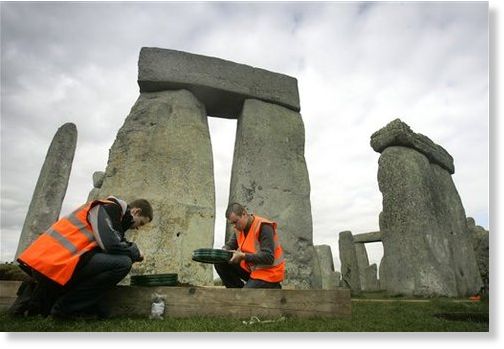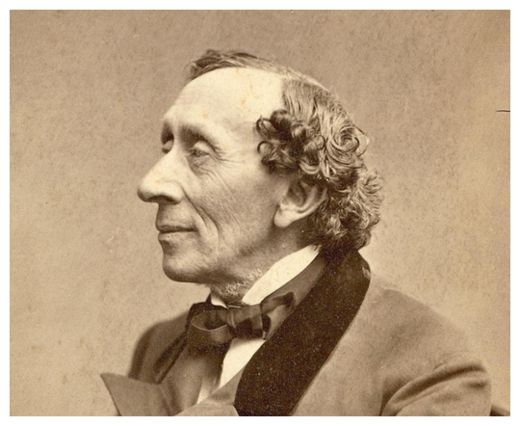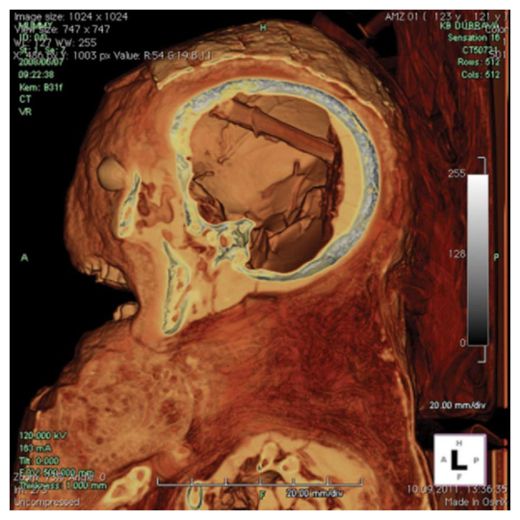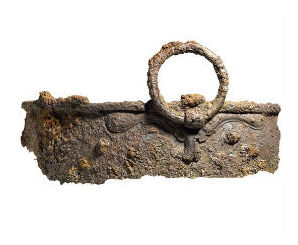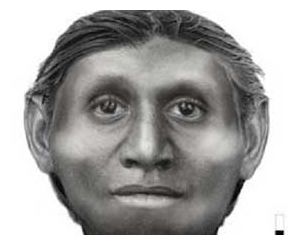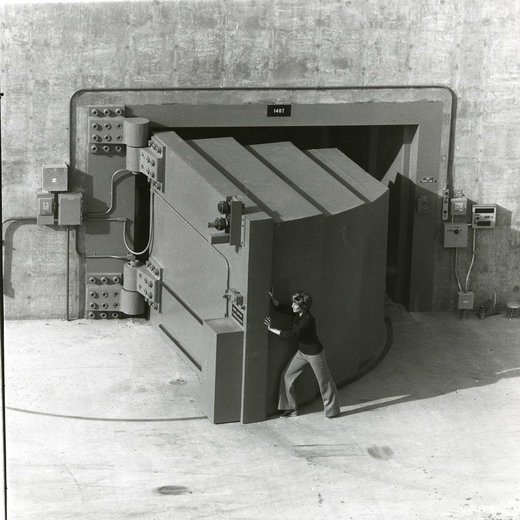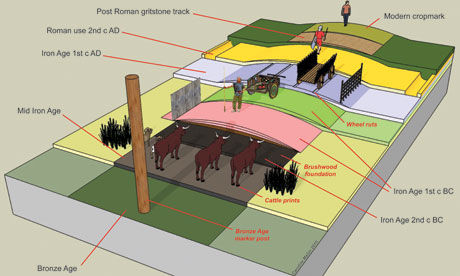
It's not a question often asked, but perhaps it should be. What did the Druids do for us? The discovery of a road in Shropshire that was built by pre-Roman engineers suggests that indigenous Britons may have been much more accomplished than we - or the Romans - liked to imagine. The road itself tells the story well.
The route had long been known as a lost Roman road, named Margary No 64 after the man who first mapped what everyone assumed to be the country's earliest network. It was visible as a low earthwork and as marks in ploughed fields, and in 1995 archaeologists dug up a bit. Sure enough, it looked Roman.
But in 2009, quarrying by Tarmac was due to destroy 400m of it, giving archaeologists a rare opportunity to expose a long section of road, some of it, crucially, very well preserved. At first, it still looked Roman, from its cambered, cobbled surface on a metre of hardcore and a clay base, to the ditches at the sides with a thin scatter of Roman rubbish. However, dig director Tim Malim noticed that the road had twice been rebuilt, and knew its history could be dated using a technique that tells you when buried mineral grains were last exposed to sunlight.
